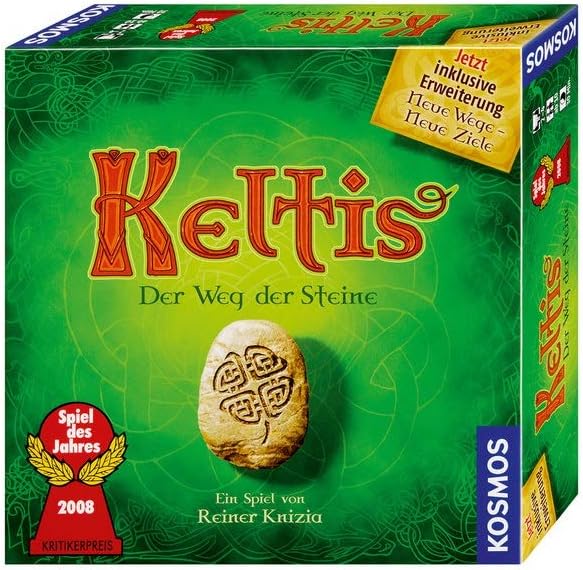Keltis (inklusive Erweiterung) (German Import)
Couldn't load pickup availability
Delivery and Shipping
Delivery and Shipping
For more details, please refer to our Shipping and Order Information.
Description
Description
| Designer |
Reiner Knizia |
| Publisher | KOSMOS |
| Players | 2-4 |
| Playtime | 30 mins |
| Suggested Age | 10 and up |
Note: This game is in German instructions.
Keltis is a multi-player game based on Lost Cities, with some rules changes, later published with Knizia's original rules and theme as Lost Cities: The Board Game.
Players play cards to move their playing pieces along stone paths. Cards show one of five different colors/symbols, each corresponding to one path; in addition, each card shows a number (0-10, twice each). In each color, each player can play his cards in either ascending or descending order. As in Lost Cities, it's better to concentrate on a few paths since the final spaces on a path grant high points, but ending early gives negative ones.
The active player plays one card (out of a hand of eight) or discards one, then moves the corresponding playing piece on the path. Many of the spaces have a token that grants some bonus: either immediate points (counted on the scoring track), an extra move on a path, or wishing stones that are needed at game end to avoid negative points.
The game ends when five playing pieces (from any combination of players) have reached the seventh (or higher) space on their respective paths. Now, scoring happens:
Pieces that moved only 1-3 steps earn negative points (-4, -3, -2).
Pieces with 4+ steps earn points (1, 2, 3, 6, 7, 10).
One piece of each player twice the height of other pieces scores double, either positive or negative.
Holding fewer than two wish stones earns negative points (-3 / -4), while a collection of five or more stones yields a bonus of 10 points.
All endgame points are added to any scored during the game. The player with the highest score wins!
Included expansion: This new board provides new challenges and requires new ways of thinking. The new gameboard is arranged portrait-style rather than the landscape orientation of the original, and the five roads have been replaced by a network of intersecting and overlapping roads, so you can continue on a different color or even choose which way to go. The point values also change during your way, not simply increasing.
Also you have 5 cairns on the board, with each cairn having a stack of five stones in a particular color. When you reach a spot on that track, you claim the top stone. Stones of all five colors are awarded 10 points; collecting three stones of the same color is also worth 10 points, too.

